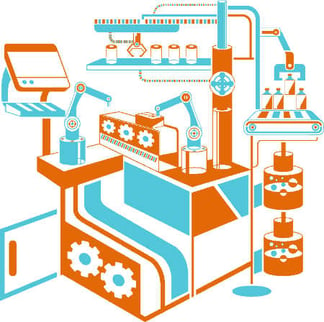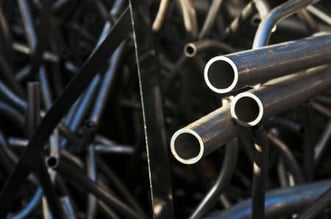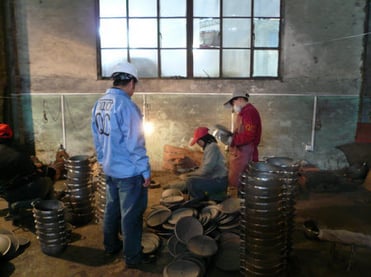 For many years, importers and retailers have been using third-party inspection companies to verify the quality of their products made in Asia. But inspecting products when they’re finished, or partially finished, can only do so much. That’s why a new trend is emerging in third-party inspection. Quality control is becoming more and more concerned with verifying the manufacturing PROCESS, not just the product.
For many years, importers and retailers have been using third-party inspection companies to verify the quality of their products made in Asia. But inspecting products when they’re finished, or partially finished, can only do so much. That’s why a new trend is emerging in third-party inspection. Quality control is becoming more and more concerned with verifying the manufacturing PROCESS, not just the product.
In this article, we'll let you know why you can't go wrong with process auditing. We'll also let you in on the three key concepts you need to understand before preparing to check the processes that make the product.
1. Understand the Materials
Some 68% of all quality failures we see in product inspection are due, at least in part, to the materials used in manufacturing. This kind of failure is common in China where suppliers will often switch out approved materials for cheaper ones to turn a greater profit. Substitution of materials for production is often done without consent from you – the buyer.
The materials you should be most concerned about are the more expensive ones (cost drivers) and materials that can generally be easily substituted with lesser quality ones that have the same appearance. The latter can be especially deceptive because the buyer frequently won't notice the difference at first.
Examples we see of this regularly include:
- Tablet PC makers installing lower quality RAM or processor chips than specified.
- Kitchen tool suppliers using a lower quality stainless steel than what the buyer has approved.
- Wood furniture makers substituting glues or epoxies for those with inferior bonding and durability.
Many material substitutions such as these may not be identifiable during a typical final inspection, but process auditing CAN uncover these. For this reason, we introduce in-process checks to verify the incoming materials. We also check whether the factory’s own quality assurance staff are properly verifying the materials.
Answering the following questions is a key step to ensuring product quality related to materials during a process audit:
- Does the facility perform Incoming Quality Control (IQC) related to the materials for your product? How is that IQC performed? Are records accurate and accountable?
- Does the facility test the incoming materials? If so, how is this monitored?
- Does the facility have in-process checks that would alert them when unapproved material is used in the manufacturing process?
***Click here to view an excerpt from an InTouch full process audit for wood products***
2. Understand the Manufacturing Process
There's a key difference between manufacturing in Western countries compared with China: A surprising number of Chinese manufacturers lack a detailed understanding of the manufacturing process. To illustrate this point, the following are real examples we’ve seen of Chinese factories not understanding the finer aspects of manufacturing a product:

- A metal housing maker doesn’t realize how the need to keep cleaning baths free of dust and particles will later affect the painting process.
- A specialized footwear maker doesn’t include spraying an anti-fungal agent as a step in their manufacturing of camping boots.
- A furniture manufacturer uses the wrong type of glue, which does not adhere properly to the particular type of wood with which they are working.
There's no substitute in these situations for understanding the manufacturing process at a high-level. This process should be audited along with inspecting the final product.
3. Implement Factory "Self-Checking" for Processes
We wish we could be right there on the production line and check each process at every moment. But the reality is it's more important that factory managers understand the process themselves. Specifically, management must understand which aspects of the process to audit on a regular basis to prevent deviation from approved methods.
So how will you know if self-checking is appropriate for your manufacturing line? Self-checking might be a viable in-process solution if:
- A system is in place with completed and archived hard copy or digital checklists. Production staff are regularly checking various manufacturing points in-process.
- There is training throughout the organization for how to observe process consistency & evaluate quality, and ensure checks are in-place. Training should apply especially for line workers and management. Indications of such training would include:
- Training curriculum and materials (per manufacturing area)
- Training records specifically indicating staff names, completed trainings and corresponding dates
- The presence of a qualified trainer
Conclusion
Process auditing is changing the face of the manufacturing industry in China as we know it. No longer is product inspection enough for many importers of Chinese-produced goods. Many buyers are finding they can curb quality issues by verifying proper manufacturing through process auditing. These quality issues might otherwise be difficult to spot or correct with a final inspection alone.
When it comes to process auditing, understanding the materials used in production is a natural place to start. Most quality issues stem from substitution of materials without the  buyer’s prior knowledge or consent.
buyer’s prior knowledge or consent.
The second aspect of process auditing is an understanding of the manufacturing process. As simple as it may seem, many factory workers seem to overlook some of the finer details of manufacturing that can affect the quality of the finished product.
Finally, “self-checking” by a supplier is the most efficient method of process auditing. Factory staff can carry out "self-checking" internally without the buyer having to hire a third-party inspection firm. A factory must meet a couple of conditions before "self-checking" can be considered a viable solution. First the factory must create and utilize effective quality checklists along various stages of production. Second the factory must carry out formal training procedures for management and staff.
Control the quality of your products by staying on top of the quality of the processes that make them!






